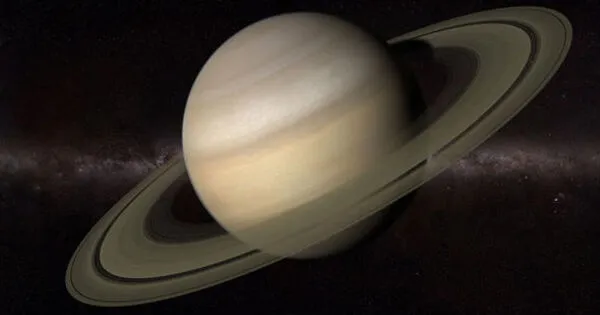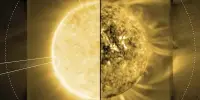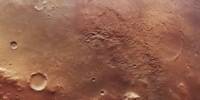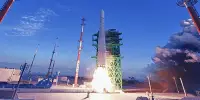Spokes are radial markings that can appear on Saturn’s rings and are believed to be caused by the interaction between Saturn’s magnetic field and charged particles in the rings. These spokes are believed to be caused by electrostatic interactions between Saturn’s rings and its magnetosphere.
Temporary ‘spoke’ features across Saturn’s rings have fascinated scientists since their discovery by NASA’s Voyager mission in the 1980s, but have eluded explanation. They’ve been spotted in the years leading up to and following the planet’s equinox, becoming more visible as the date approaches. Saturn’s upcoming autumnal equinox of the northern hemisphere on May 6, 2025, signals the return of spoke season. Because of time dedicated to Saturn in the mission’s ongoing Outer Planet Atmospheres Legacy (OPAL) program, NASA’s Hubble Space Telescope will be on the job studying the spokes. Is the smudgy appearance caused by Saturn’s magnetic field and its interaction with the solar wind, as current theory suggests? Confirmation could come in this spoke season, as scientists combine archival data from NASA’s Cassini mission with new Hubble observations.
New images of Saturn from NASA’s Hubble Space Telescope herald the start of the planet’s “spoke season,” when enigmatic features appear across its rings around the equinox. Planetary scientists have yet to fully explain the spokes’ cause, as well as their seasonal variability.
Thanks to Hubble’s OPAL program, which is building an archive of data on the outer solar system planets, we will have longer dedicated time to study Saturn’s spokes this season than ever before.
Amy Simon
Saturn, like Earth, is tilted on its axis and thus has four seasons; however, due to Saturn’s much larger orbit, each season lasts approximately seven Earth years. When the rings are tilted edge-on to the Sun, the equinox occurs. When Saturn is nearing the summer or winter solstices, the spokes vanish. The spokes are expected to become more visible and noticeable as the autumnal equinox of Saturn’s northern hemisphere approaches on May 6, 2025.
The planet’s variable magnetic field is suspected of being the source of the spokes. The interaction of planetary magnetic fields with the solar wind results in an electrically charged environment (on Earth, when those charged particles hit the atmosphere this is visible in the northern hemisphere as the aurora borealis, or northern lights). Scientists believe that the smallest, dust-sized icy ring particles can become charged as well, temporarily elevating them above the rest of the rings’ larger icy particles and boulders.
The ring spokes were discovered in the early 1980s by NASA’s Voyager mission. Depending on the lighting and viewing angles, the transient, mysterious features can appear dark or light.

“Thanks to Hubble’s OPAL program, which is building an archive of data on the outer solar system planets, we will have longer dedicated time to study Saturn’s spokes this season than ever before,” said NASA senior planetary scientist Amy Simon, head of the Hubble Outer Planet Atmospheres Legacy (OPAL) program.
The last equinox on Saturn occurred in 2009, while NASA’s Cassini spacecraft was orbiting the gas giant planet for close-up observations. With Cassini’s mission completed in 2017 and the Voyager spacecraft long gone, Hubble continues to monitor changes on Saturn and the other outer planets over time.
“Despite years of excellent Cassini mission observations, the precise beginning and duration of the spoke season remains unpredictable, similar to predicting the first storm during hurricane season,” Simon said.
While the other three gas giant planets in our solar system have ring systems, nothing compares to Saturn’s prominent rings, which serve as a laboratory for studying spoke phenomena. It is currently unknown whether spokes could or do exist on other ringed planets. “It’s a fascinating natural magic trick that we can only see on Saturn for the time being,” Simon said.
Hubble’s OPAL program will add visual and spectroscopic data in wavelengths ranging from ultraviolet to near-infrared to the Cassini archive. Scientists hope to put these puzzle pieces together to gain a better understanding of the spoke phenomenon and what it reveals about ring physics in general.
















